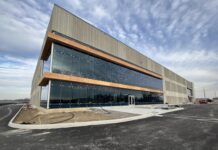President and CEO of Conservation Halton, Hassaan Basit, might not be a name that springs to mind when thinking about leaders in digital transformation.
But it should be.
As a trained biologist and environmental proponent, Basit admits his sector has lagged in adopting technology, but explains this is the area where he has made leaps and bounds over the past year and a half.
“Although we knew we needed to embrace digital transformation and it was a part of our strategic plan set out a number of years ago, the pandemic really necessitated innovation and kicked us into action. Having to shut down ourparks when our region initially went into lockdown invoked a gut-wrenching emotional reaction in our whole team. We needed to solve the problem of providing safe and equitable access to nature for everyone in the GTA. We needed to get people back outside again, but not waiting in cars along the side of the road for parking spots to open up at our parks. So, we embraced innovation and took a risk.”
Basit worked with a small local Canadian startup to introduce technology that allowed Conservation Halton to open up and control capacity in its parks, and on its trails and ski area. In just a few months an online reservation system was operational, along with electronic gates on-site with smart cameras to recognize licence plates, and sensors to monitor capacity on trails.
“We wanted a system that would buffer against the ups and downs of the pandemic and also ensure an excellent experience for users. We wanted the reservation process to be fast and easy, and avoid lineups to get into the parks and trails.”
The leap into technology paid off beyond Basit’s expectations. Since implementation in the summer of 2020, lineups have been completely eliminated from all parks and visits have grown from 1 million per year with overcapacity issues to 1.5 million per year with zero capacity issues.
“What started out as needing to open parks has turned into continuous and evolving digital transformation that’s changing the core of how we operate. We’re now using data analytics to figure out optimal timing and visitor slots, adapt for weather, forecast flooding for optimal operation of our dams, and target specific customer segments with offers that we know they’ll like. We’re now introducing AI to automate everything over the next 12 months. The technology allows for more equitable access to nature while also helping us get the balance right to protect the environment.”
Basit says this massive shift required a cultural change in the organization. “We needed to embed technology into all of our processes to make this work, and we needed everyone – from operations to marketing to management – to get on board. We received feedback from staff and customers, and we assured staff that technology wouldn’t take away their jobs, but instead help them shift their time to the parts of their work that they enjoyed the most. We’ve embraced the fact that we need to leverage technology to be relevant over the coming years.”
The focus on people as the key part of the technology revolution was something Basit learned while he was a student in the Executive MBA in Digital Transformation program at McMaster University’s DeGroote School of Business. “We spent a lot of time looking at why companies fail as they go through digital transformation – and they don’t fail because of the technology, they fail because of the people. Organizations need a structure that is agile, open to change and that embraces tech and data-driven decisions.”
Milena Head, academic director of the Executive MBA program and professor of information systems at DeGroote, agrees.
“Leaders in organizations often fear that technology is something they can’t understand and therefore will make them irrelevant. But it actually provides them with the insights to make better decisions and become even more relevant to their customers and stakeholders. We created the Executive MBA program to teach leaders how to understand data and how it can improve value creation – and how to build confidence in communicating the value that technology can provide.”
Head says that digital transformation is all about understanding people and changing mindsets to see the value in data-driven decision-making.
“Technology and how we use data is always evolving – now more rapidly than ever. The need for technology-driven autonomous business and operating models is continuously increasing – in every field and every industry. Leaders who learn how to use data to better understand their customers, employees and stakeholders will be better able to stay agile and meet expectations. There’s so much competition on a global scale, and companies must meet rapidly changing expectations to deliver on what their highly sophisticated customers want. To do that, it’s essential to learn how to manage digital systems and lead complex and diverse teams in digital environments.”
As Basit has figured out, it involves taking a customer-centric approach. “Embracing a whole new complex combination of technological solutions has allowed us to understand our customers better than ever before, and provide them with more customized, quality experiences. Investing in digital transformation was risky and required a cultural change to become agile and nimble, but it has had tremendous benefits. We have a fantastic ecosystem of innovation and technology here in Canada. If leaders don’t embrace it, they may soon become obsolete.”
Written by: Kelly Anderson
















